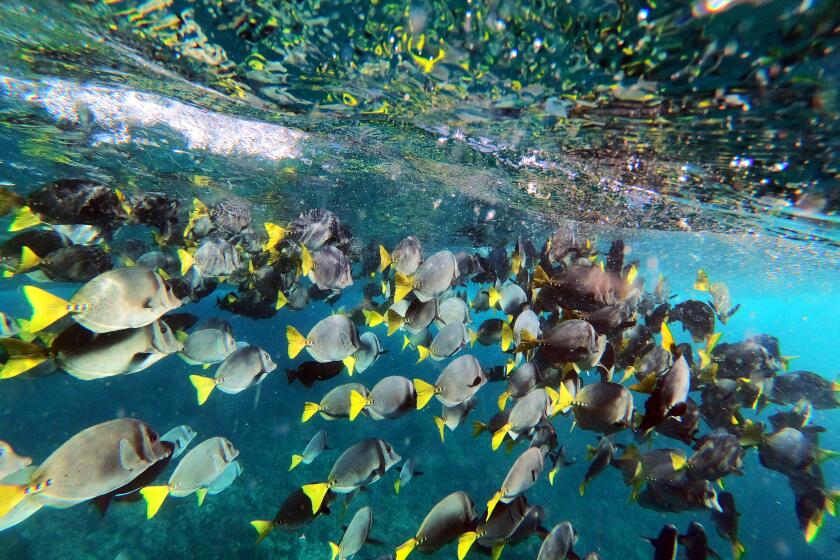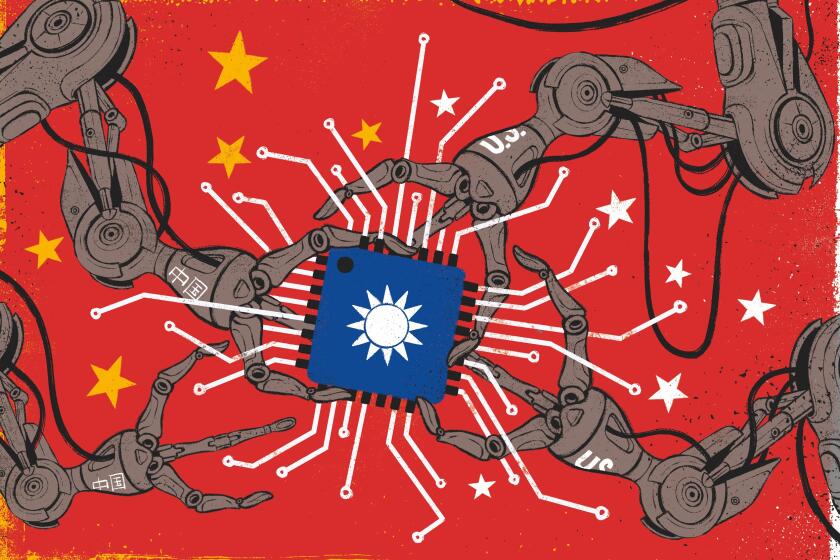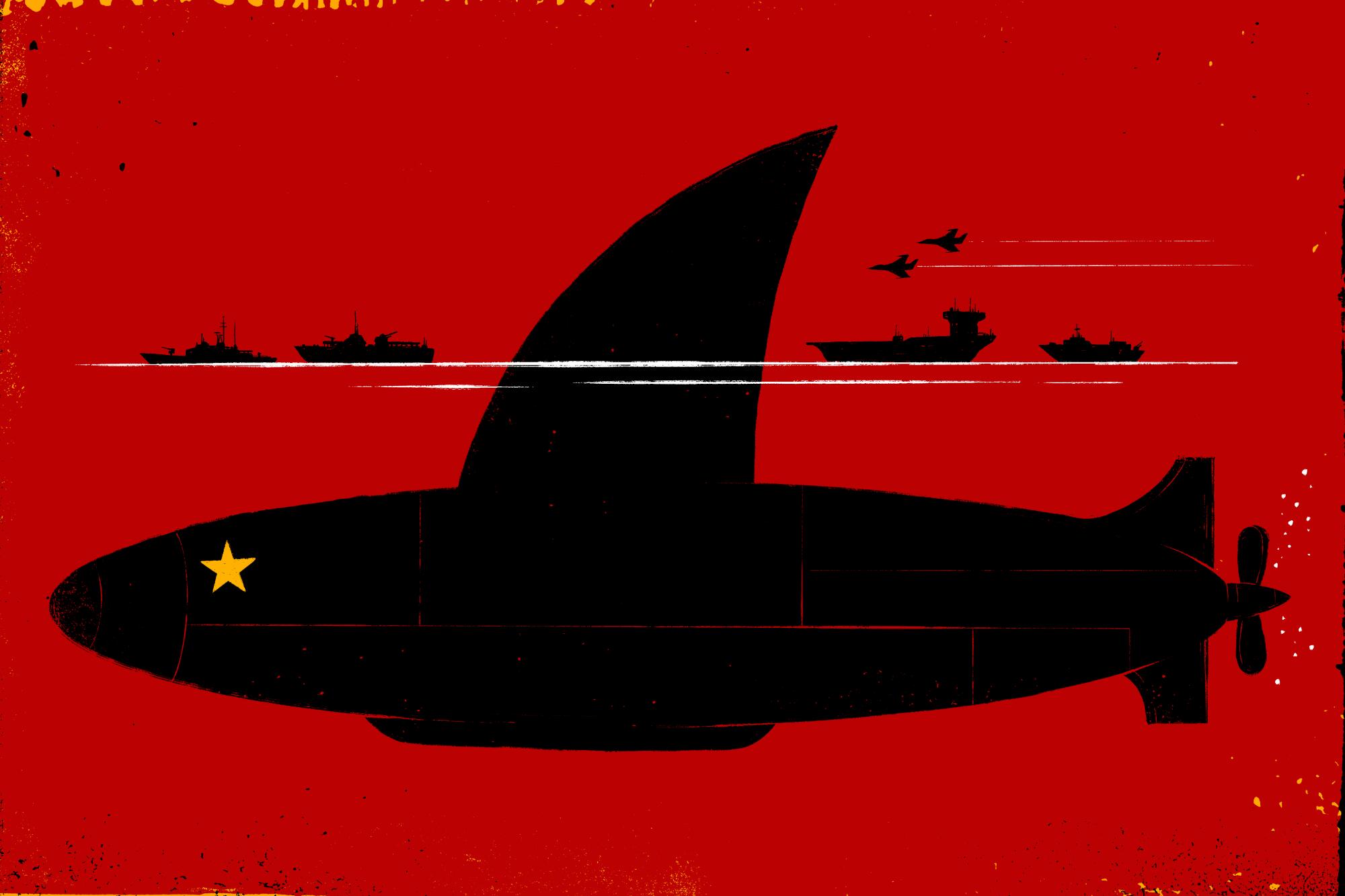
Beijing’s aggressive South China Sea expansion shows its willingness to defy international laws for President Xi Jinping’s visions of power.
On a warm, cloudless morning in June, a giant vessel blasted through the still waters of the South China Sea toward a wooden fishing boat painted in cerulean blue and flying the red flag of Vietnam.
The veteran fishing captain cranked up the engine to flee, but the approaching ship dropped two motorized dinghies into the sea with uniformed officers aboard. The rubber crafts raced along either side of the fishing boat, squeezing it like a pincer.
As the captain slowed to avoid a collision, the large ship was soon upon them. The large letters across its steel hull read: China.
Crammed into their cabin for safety, the 17 men were knocked to the deck by a jolt that nearly tipped the boat. Then another. And another. “Like war,” recalled crew member Nguyen Day.
The Chinese vessel smashed the boat repeatedly, damaging the cabin. Four fishermen tumbled overboard. As the officers pulled them from the water, Day, 41, and the other Vietnamese men piled into lifeboats and watched their craft — laden with several hundred pounds of tuna, mackerel, grouper and flying fish — begin to float away.
The June 10 attack was part of Beijing’s hard-nosed offensive in the South China Sea, where Chinese vessels are using increasingly aggressive tactics to deter rival nations and stake control over the strategic waterway.
Unfazed by rising global criticism, China’s navy, coast guard and paramilitary fleet have rammed fishing boats, harassed oil exploration vessels, held combat drills and shadowed U.S. naval patrols. The escalating show of force has overwhelmed smaller Southeast Asian states that also claim parts of the sea, one of the world’s busiest fishing and trade corridors and a repository of untapped oil and natural gas.
Beijing’s maritime expansionism illustrates not only the Chinese Communist Party’s growing military might but also its willingness to defy neighbors and international laws to fulfill President Xi Jinping’s sweeping visions of power.
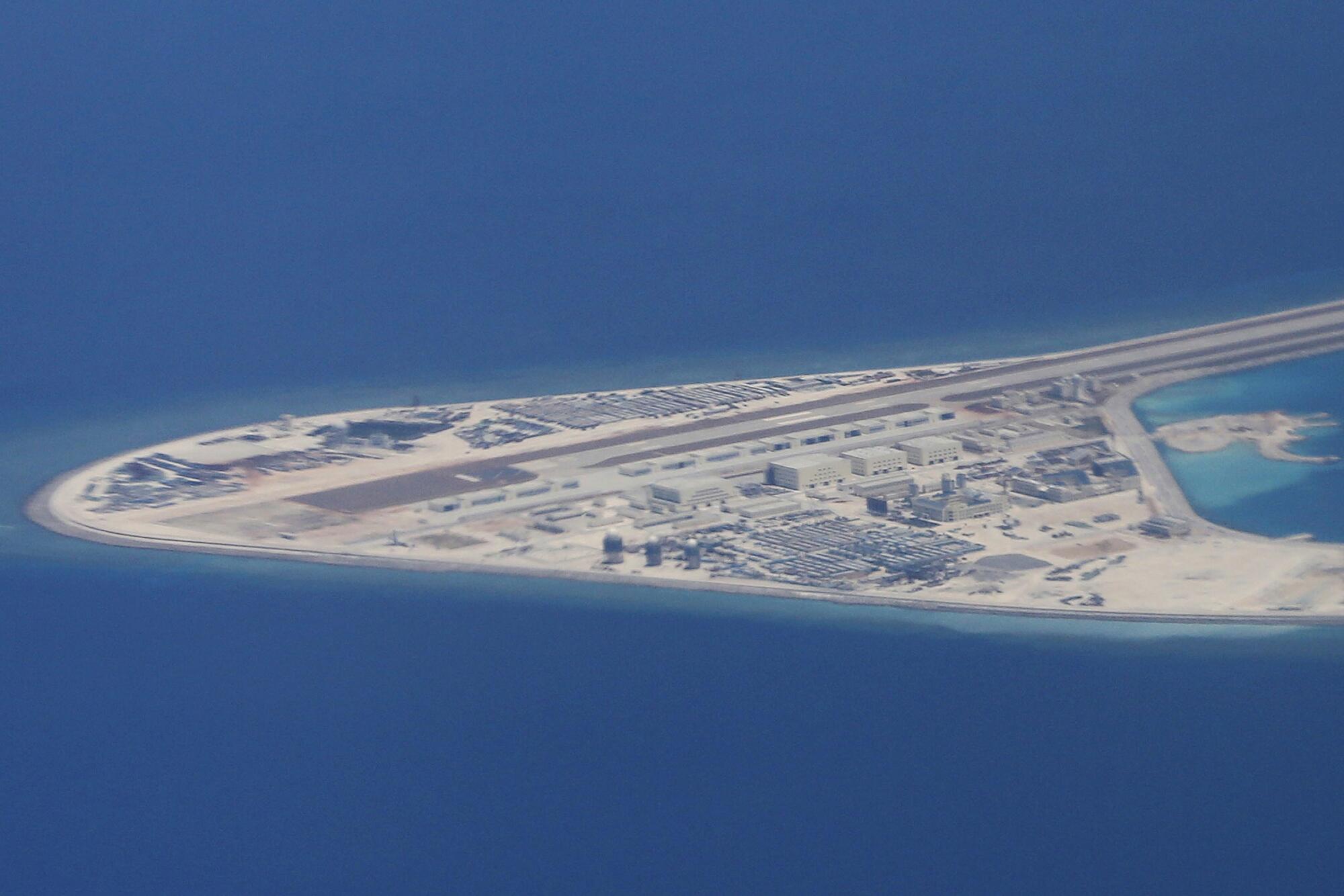
In its strategic quest to dominate the waterway separating the Asian mainland from the island of Borneo and the Philippine archipelago, China has built military outposts on disputed islands and reefs that, according to Xi, “are Chinese territory since ancient times … left to us by our ancestors.” The network of bases, harbors and landing strips deep in international waters has created a buffer for China’s southern coastline, further encircled Taiwan and challenged the Pentagon’s ability to move ships into Asia.
“It appears that China is rapidly developing the capabilities to exclude other navies from the South China Sea,” Bill Hayton, an author and associate fellow at the Chatham House think tank, told a congressional commission in September.
Under the Trump administration — which has called China a “bully” seeking a “maritime empire” — the U.S. sailed more warships than normal through the region in 2020 to assert navigation rights. But the operations have done nothing to claw back the islets and waters that five Southeast Asian nations and Taiwan claim Beijing has usurped.
These countries don’t have nearly enough naval power on their own to dissuade China. Instead, the governments of Vietnam, the Philippines and other states have waged a quieter form of resistance by encouraging traditional fishing communities to continue venturing into disputed waters — placing them on the front lines of Chinese aggression.
It is a high-seas cat-and-mouse game of almost cartoonish proportions, pitting a superpower with the world’s largest armed fleet — including more than 300 navy ships, 130 large coast guard cutters and a maritime militia comprising hundreds of thousands of motorized boats — against men equipped with little more than nets who earn a few hundred dollars per expedition. Piloting aging wooden vessels outfitted with simple navigation systems, fishers must evade capture while hunting for elusive catches in a sea ravaged by unregulated fishing and dredging, much of it by China.
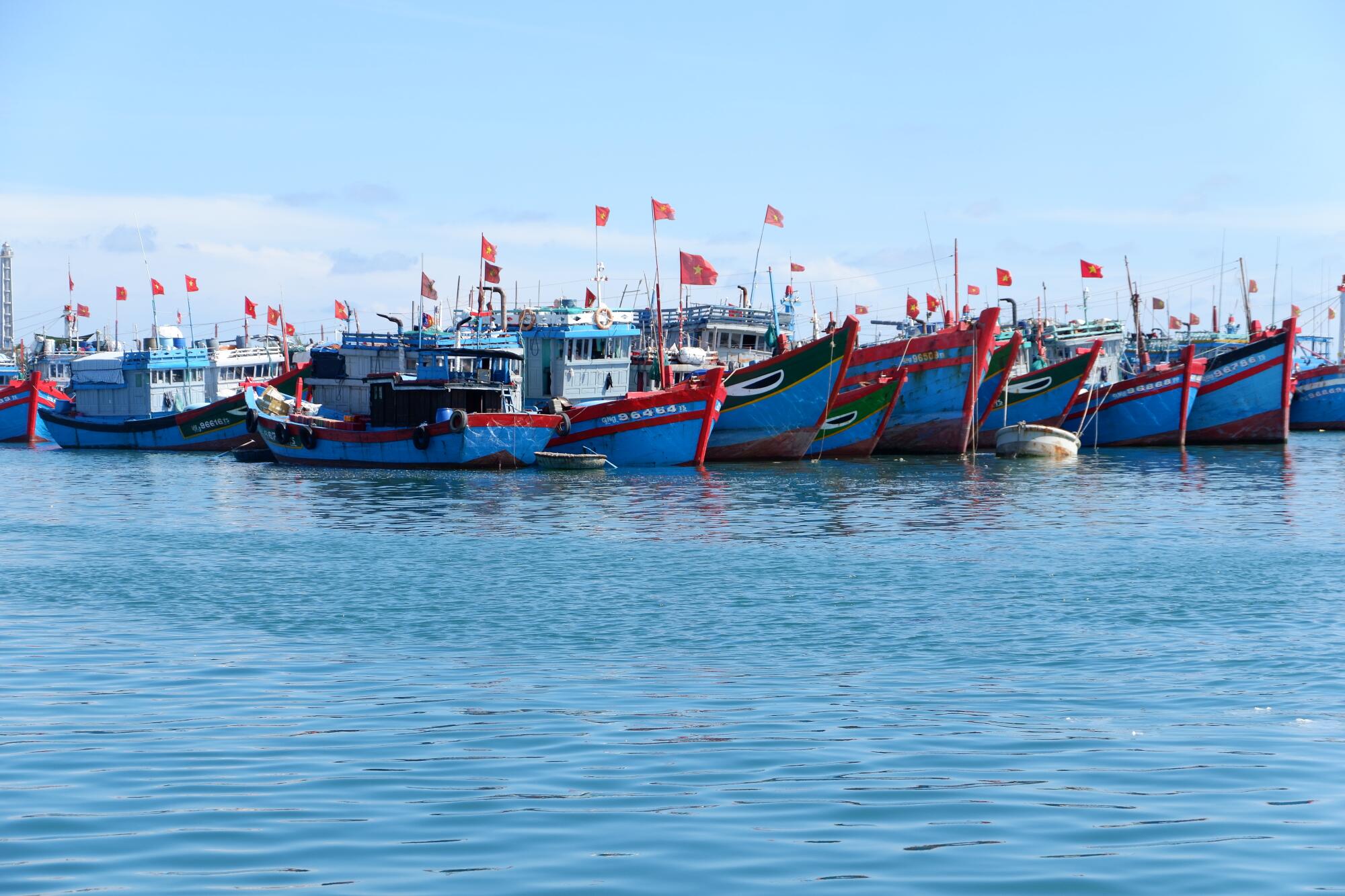
“As fish stocks collapse due to overexploitation and environmental destruction, Vietnamese and increasingly Filipino fishers are heading farther from home and taking greater risks in contested waters,” said Greg Poling, director of the Asia Maritime Transparency Initiative at the Center for Strategic and International Studies. “That helps explain why they are the most frequent actors to come into contact with Chinese law enforcement and paramilitaries.”
Fisherman Tran Hong Tho acknowledged that Vietnamese travel farther into the sea these days. “The shore has run out of fish,” he said.
Beijing is unapologetic about its actions, which it describes as maritime policing against illegal fishing. In September, the Chinese coast guard reported that it had expelled 1,138 foreign fishing boats from the northern half of the South China Sea in the preceding four months, boarded and inspected dozens, and detained 11 boats and 66 foreign crew members, “effectively safeguarding our fishery interests and maritime rights.”
For the fishing communities of Vietnam’s central coast, confronting China represents a collective obligation — to defend the waters where generations have made their living.
“The Vietnam government sees fishermen as a living monument to assert maritime sovereignty in the East Sea,” said Le Khuan, chairman of the fishing union on the island of Ly Son, using the Vietnamese term for the South China Sea.
::
More than nationalism is at stake in the 1.4 million square miles of water.
The South China Sea has connected civilizations for thousands of years — from the Malay merchant ships that sailed Chinese silk, Indian spices and Arabian frankincense along the ancient trade corridor between Europe and Asia, to the hulking freighters and container vessels that crisscross the oceans and power today’s globalized commerce. An estimated $3.4 trillion in goods passes through the sea annually, including 14% of all U.S. trade, 40% of China’s and 86% of Vietnam’s.
One-third of Vietnam’s 96 million people live along the serpentine coastline, where humble flotillas of identical blue-and-red boats bob in ramshackle harbors. The sea, which accounted for an estimated 12% of the global fish catch in 2015, has made Vietnam a leading seafood exporter and supports the families of at least 1.8 million people employed as marine fishermen.
The June 10 collision occurred off one of the most contentious zones: the Paracel Islands, claimed by Vietnam, China and Taiwan but occupied entirely by China since its troops drove out South Vietnamese forces in 1974.
The chain of coral islands and reefs — known as Hoang Sa in Vietnamese and Xisha in Chinese — lies roughly 150 nautical miles from both the central Vietnamese coast and the Chinese island of Hainan. On Woody Island, the largest in the archipelago, Beijing has built its main military and administrative center in the sea, complete with an airstrip, two harbors, surface-to-air missile platforms, surveillance and reconnaissance systems, desalination plants — even a tourism industry marketed to mainland Chinese.
Vietnam has denounced China’s occupation of the islands as illegal and backed fishing communities with fuel subsidies, preferential loans and other modest assistance.

From Ly Son, an island of Buddhist shrines and garlic fields 20 miles off the coast, more than 500 fishing boats trawl the disputed waters. The living rooms of veteran fishing captains are lined with framed certificates, recognition from provincial authorities of their years of fishing in the Paracels.
Although no fishermen are believed to have been killed in an intentional collision, every trip to the islands now carries the risk of a clash — and financial ruin.
“I’ve lost count of how many times my boat was attacked or chased away by Chinese vessels — you get used to it,” said Duong Ming Thanh, a 65-year-old captain on Ly Son who has fished in the Paracels since the 1980s.
Chinese used to hold fishermen for ransom; these days, they’re more likely to lob hammers and cement chunks at the smaller boats, sending crews scurrying into cabins before being interdicted. Catches and equipment are often confiscated, men sometimes beaten. Thanh’s most recent encounter came in August, when he escaped a Chinese vessel that hounded his boat and blared at him over a loudspeaker to return to Vietnam.
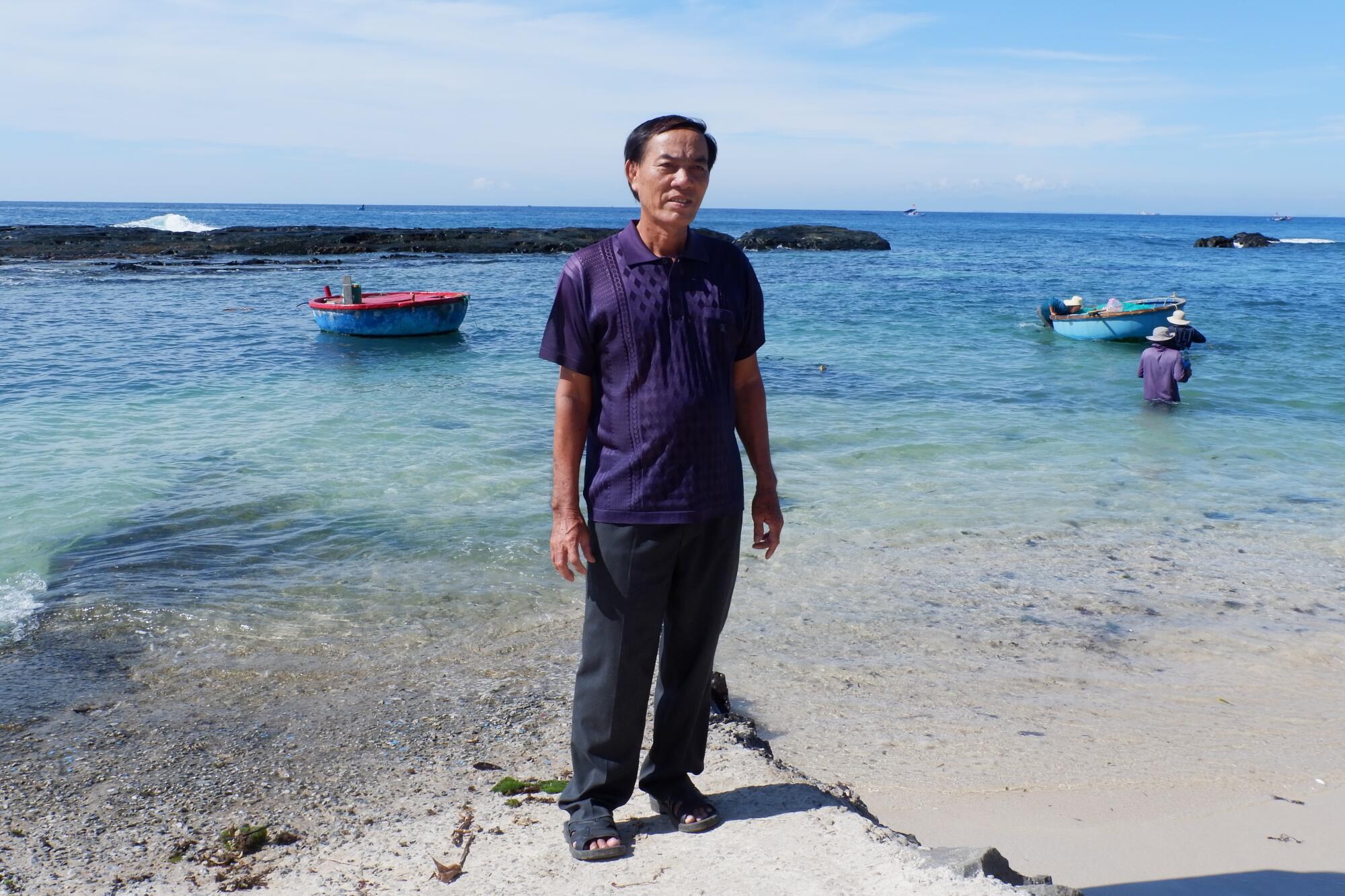
“Compared to them, our boat is as small as an ant,” he said. “Fishing near the shore is safer, but we insist on fishing in Hoang Sa because it’s been our livelihood for generations. It’s like our backyard. It belongs to us, so why would we be scared?”
::
In early June, Nguyen Loc, the captain of the fishing boat numbered QNG 96416, said goodbye to his wife and four children and left his tidy, two-story house on Ly Son. He set a course for Lincoln Island in the eastern Paracels, about 20 miles from Woody Island, in a part of the sea known for sea cucumber, a slithery delicacy.
The 50-foot boat was piled with more than $8,000 worth of catch when it was intercepted by the Chinese ship and its dozens of officers, some pointing weapons at the crew.

The Chinese officers treated the four crew members who fell overboard for minor scrapes, then herded all 17 onto the bow of their ship. They watched as officers chased down the hobbled fishing boat and climbed aboard, seizing their nets, navigation equipment and everything they had caught.
Loc, speaking in Vietnamese, pleaded with the Chinese to anchor his boat in shallow water so it wouldn’t float away, but they refused. Neither side understood the other. An argument ensued, and one of the men kicked Loc in the head.
There was little talking after that.
The crew was made to sign pieces of paper printed in Chinese, then allowed to go back aboard their ransacked craft. The cabin had nearly caved in and its windows were shattered. Water had seeped into the engine, so they had to dry it out before they could sail again.
It took two days and two nights to make it back to Ly Son, guided by a handheld compass. The men slept under the stars and gnawed on raw noodles and rice paper.
When they finally stepped ashore, local authorities ordered them into quarantine. Because they had met Chinese people, an official explained, they might have contracted the coronavirus.
::
Though the countries share communist systems of government, Vietnamese harbor deep anti-Chinese sentiment from centuries of occupation and three deadly conflicts in the 1970s and 1980s. In 2014, tensions flared at sea after a Chinese-operated oil rig ventured deep into Vietnam’s exclusive economic zone, triggering a weeks-long standoff and violent protests across the country.
Vietnam’s leadership grew even more uneasy after China refused to accept the 2016 international tribunal ruling, which invalidated Beijing’s sweeping claims of “historical rights” inside its so-called nine-dash line: a U-shaped zone stretching 1,200 miles south of the Chinese mainland and encompassing more than 80% of the sea.
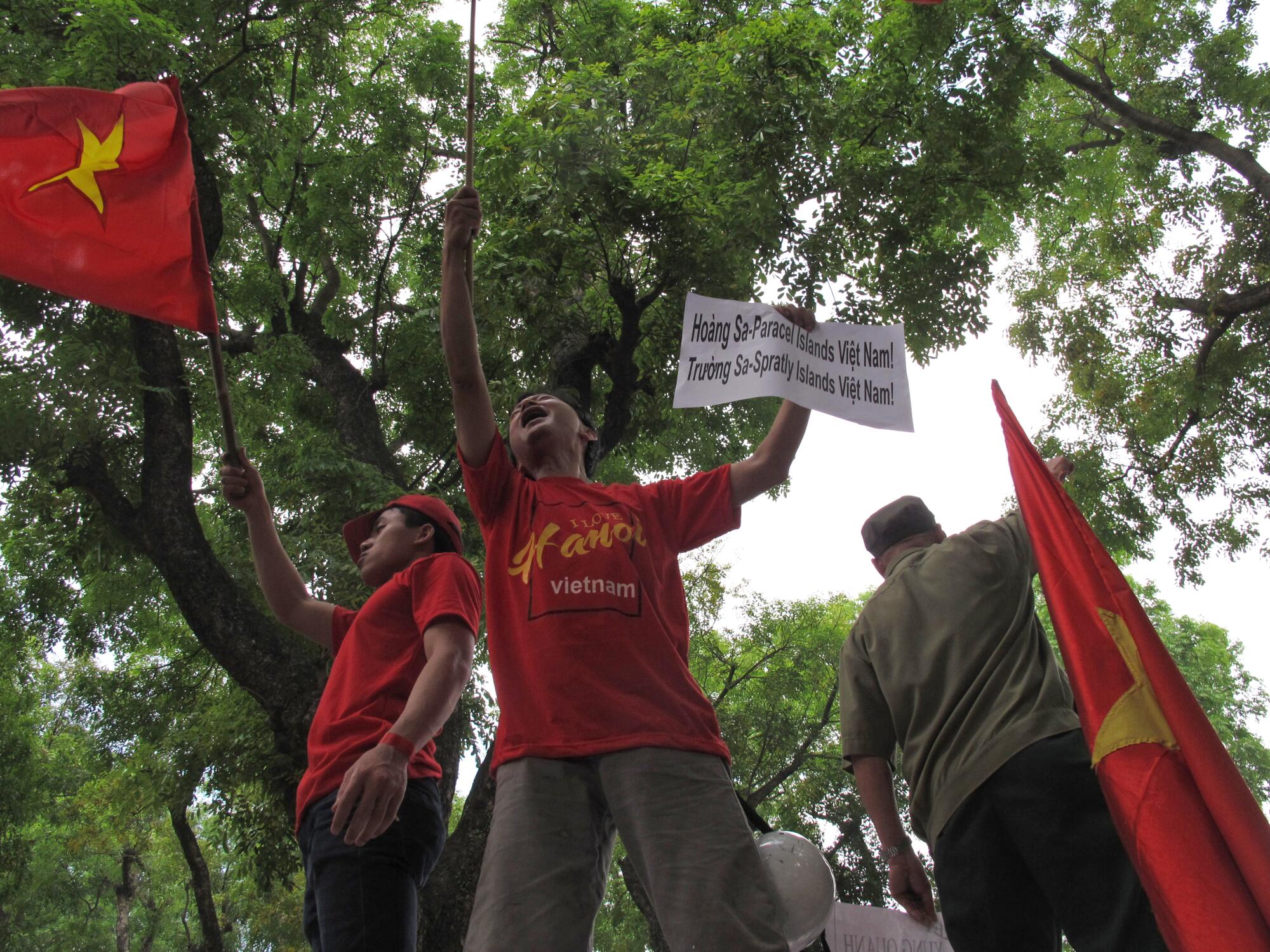
While the Philippines, which had filed the case, and other claimants have played down tensions with their colossal neighbor, Vietnam has spoken out more consistently against Beijing’s expansionism, contributing to a rapprochement with Washington. In March, Hanoi welcomed the U.S. aircraft carrier Theodore Roosevelt to the port of Da Nang, a move that irked Beijing. Four months later, the State Department declared China’s nine-dash-line claims “completely unlawful,” formally endorsing the 2016 ruling.
“When it feels like it has stronger support from other countries, including the U.S., Vietnam tends to show China a tougher face,” said Linh Nguyen, a Singapore-based analyst at Control Risks, a consultancy. With its twice-a-decade party congress scheduled for early next year, she added, “the leadership is focused on building legitimacy with the people, so that is more important than being soft with China.”
In April, Hanoi issued an unusually harsh statement, saying China’s behavior “threatened the lives and damaged the property and legitimate interests of Vietnamese fishermen.” Days earlier, Tran Hong Tho had anchored his new, 60-foot boat off Woody Island when he spotted the red and green lights of a Chinese ship approaching. The Chinese sprayed water cannons and rocks before slamming into the boat, nearly splitting it in two.
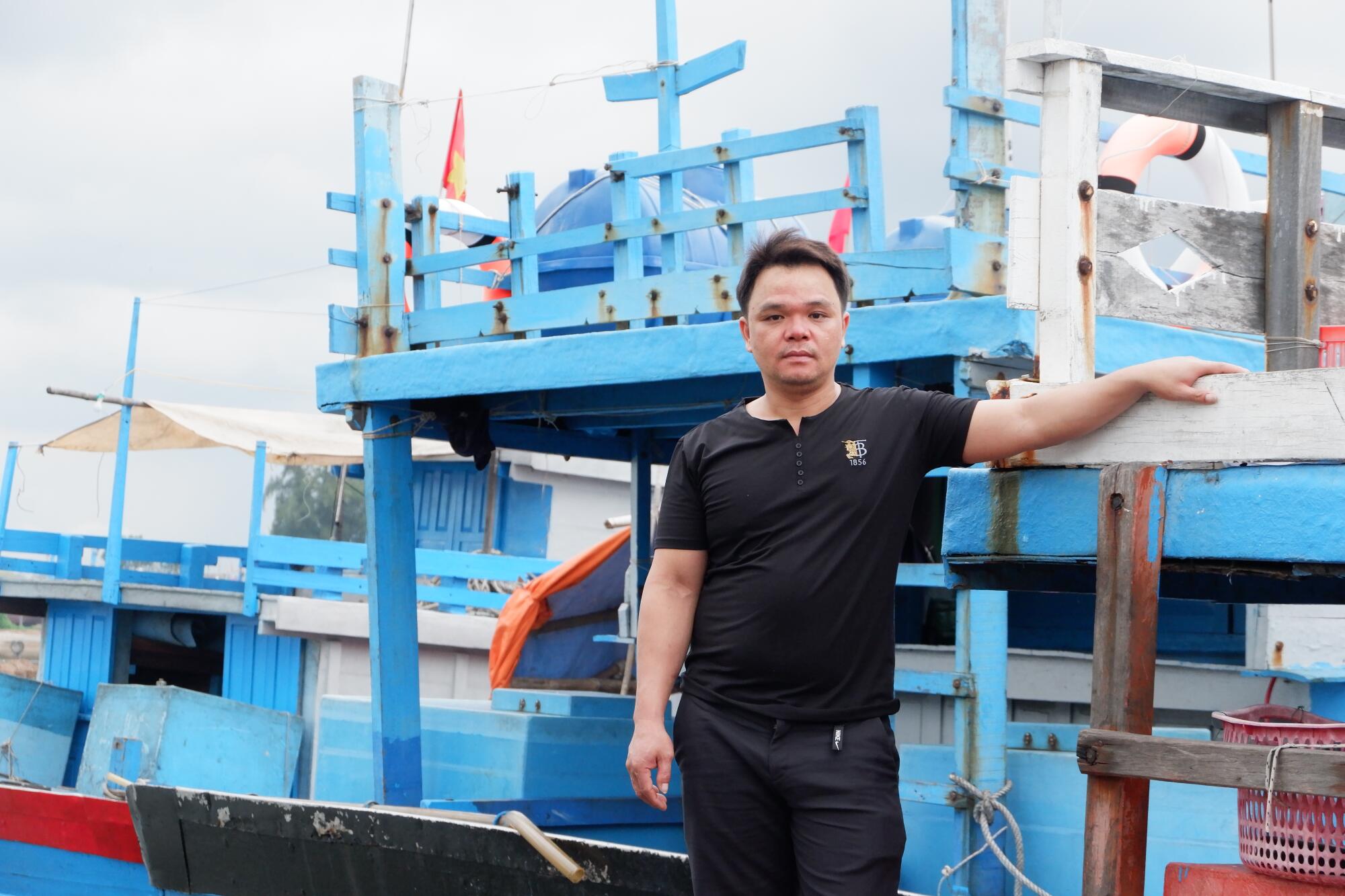
The Chinese brought eight soaking wet Vietnamese people aboard their ship, where they watched the fishing boat — which the 33-year-old Tho had built just a year earlier — sink below the surface along with six tons of catch.
Tho and his crew remained captive until the following afternoon, given only water and bread, when three other Vietnamese boats came looking for them. The Chinese chased them too, Tho said, before relenting and handing him and his men over to their compatriots.
“What can we do?” Tho said when a Times reporter visited him at his one-story home in the coastal commune of Binh Chau. “Chinese vessels are dozens of times bigger than our boats. They’re all armed. We don’t dare push back.”
Tho began fishing for another captain, hoping to earn back some of the money he’d borrowed to build his boat. In October, the provincial authority denied his request for a $3,200 fuel subsidy for the fateful expedition in April on the grounds that he hadn’t spent the requisite 15 days in the Paracels.
Criticizing the government is risky in Vietnam’s one-party state, yet Tho could not mask his despair.
“Fishermen have to suffer and struggle on our own to overcome losses when our boats are attacked by China,” he said. “To be honest, I am disappointed.”
::
Fishing industry leaders say the Vietnam government has been slow to increase financial support for crews that are attacked. A sinking could mean tens of thousands of dollars in losses, but captains usually recoup only a fraction of that.
Nguyen Viet Thang, a former deputy fisheries minister, said the government’s current policies are “meant only for spiritual encouragement, without helping fishermen recover from the damage.”
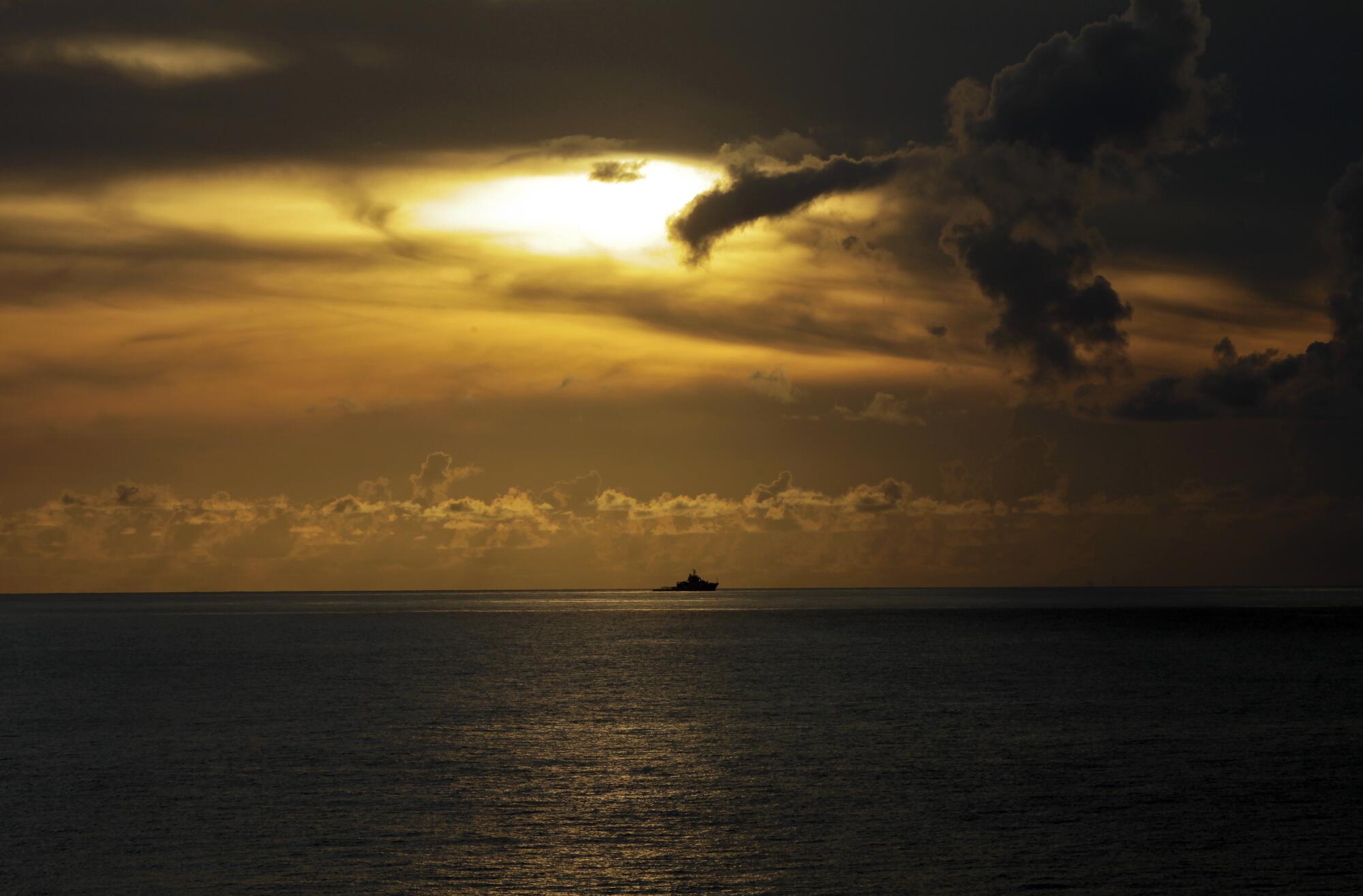
Other initiatives have foundered. A $400-million plan to help fishers upgrade to steel-hulled boats produced substandard craft that were quickly abandoned. An official maritime militia launched a decade ago has stationed members aboard just 8,000 fishing vessels, or 1% of the registered fleet, according to government statistics.
Last December, the defense ministry announced plans to beef up the maritime militia in 14 provinces for “sovereignty protection and economic development,” but fishermen say they’ve yet to glimpse the new units.
“The structure and the operation of Vietnam’s maritime militia is not coordinated by a grand strategy,” said Nguyen The Phuong, a researcher at the Saigon Center for International Studies. “At the moment we are lacking a more coherent, effective way of countering what China is doing.”
China has stepped up its criticism, with state media accusing Vietnam of arming its fleet to encourage illegal fishing. Vietnamese boats have long been known to transgress not only Chinese waters but also those claimed by Indonesia and Malaysia — actions that in 2017 led the European Union to slap Hanoi with a “yellow card” warning on seafood that could lead to trade sanctions.
With estimates suggesting the sea’s fish stocks have plunged by 70% to 95% since the 1950s, a Peking University think tank recently described illegal fishing by Vietnam as “the most serious challenge to maritime security in the South China Sea.”
Yet many experts argue that China is the main culprit in overfishing, offering massive incentives to its armed fleet and regular fishermen to venture far into other nations’ exclusive economic zones, from Latin America to the Antarctic.
The addition of armed vessels could heighten tensions, especially as governments have failed to make progress on a legally binding code of conduct for the disputed waters, and no country is pursuing an agreement on how to manage fisheries in a rapidly depleting sea.
“Clashes will increase as China strengthens de facto control and [fish] stocks collapse,” Poling said. “Eventually we will see loss of life if this keeps up.”
The fishermen of Ly Son have no plans to abandon the South China Sea. Next year, when typhoon season eases and calm returns to the water’s surface, Loc and his crew will set sail once again for the Paracels — in search of the fish their grandfathers caught.
“I’ve been going out into the sea for 20 years now, and I’ve never stopped except during rough waters,” Loc said. “I will keep on going out there until I die.”
Special correspondent Bao Uyen reported from Ly Son and Times staff writer Bengali from Singapore.
This is the fourth in a series of occasional articles about the effect China’s global power is having on nations and people’s lives.
More to Read
Start your day right
Sign up for Essential California for news, features and recommendations from the L.A. Times and beyond in your inbox six days a week.
You may occasionally receive promotional content from the Los Angeles Times.
